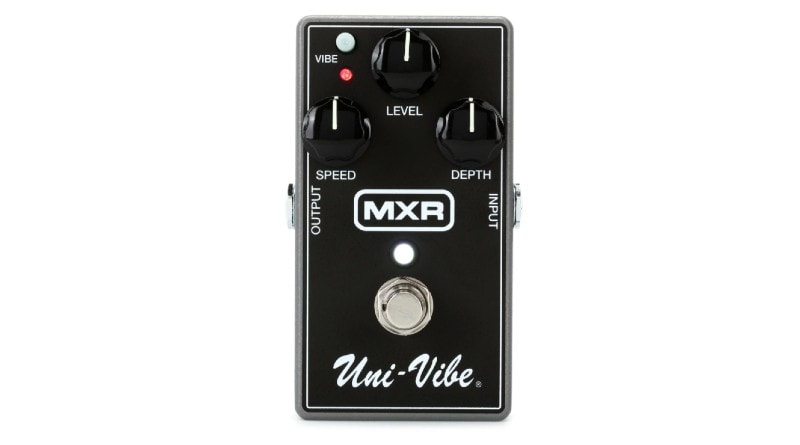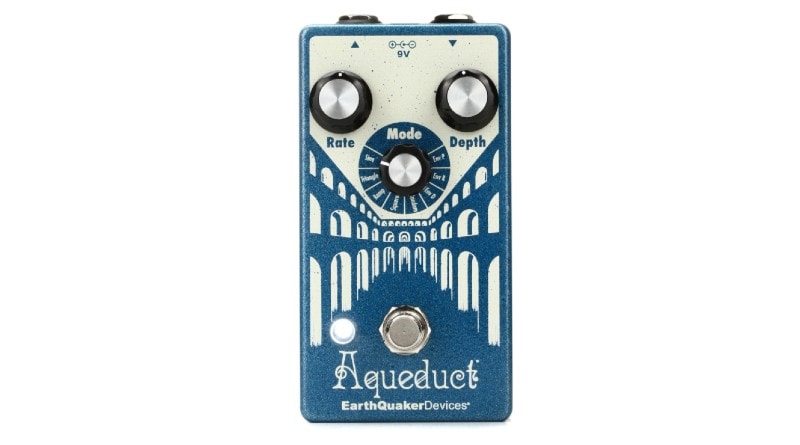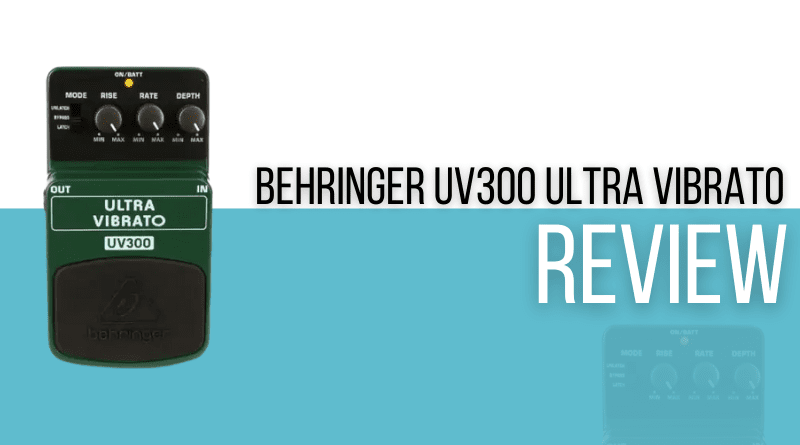There have always been budget pedals on the market, but rarely has a manufacturer of low cost gear shaken up the market in the same way as Behringer has done in recent years. Not only have they made quality gear affordable, but they’ve also resurrected long since discontinued models from the grave and made them available to all.
Take for example the UV300 Ultra Vibrato. This is a clone of the Boss VB-2, an extremely popular pedal that ceased production back in 1986. Boss have since revived this model as the VB-2w Waza Craft, a great pedal, but one that hasn’t quite captured the magic of the original. It has been said, however, that the Behringer UV300 is sonically identical to the original, which now begs the question, can a budget Behringer pedal replace an iconic Boss model? Read on to find out.
Read more about our review process.
Contents
Behringer UV300 Ultra Vibrato: Who Is this For?
The Behringer UV300 Ultra Vibrato is a great pedal for guitarists at any stage of their journey. Whether you’re just starting out and you are looking to experiment with different sound textures, or whether you’re an experienced player who’s been hunting for an original Boss VB-2 but couldn’t stomach paying $700 to $1000 or more for a used pedal, the UV300 will do everything you ask of it.
Behringer UV300 Ultra Vibrato: Appearance / Features / Controls
The UV300 Ultra Vibrato has the same form factor as it’s Behringer siblings, that is to say, it comes in a uniform size, with plastic housing. We loved the British racing green color, it’s handsome, and despite the fact that it isn’t a bright color, it stands out on the board.
We’ve talked to a lot of folks about these Behringer pedals, and the first concern is always the plastic construction. We can absolutely dispel the myths that they are flimsy – in fact, as long as you’re not intentionally abusive, there’s no reason you couldn’t gig with one.
This pedal has a simple mono line in, and line out setup, with a large, hinged stomp pad the control layout is very straight forward, with 3 rotary dials and a selector switch. From left to right, the selector switch has 3 modes – latch, bypass, and unlatch. In latch mode, the stomp pad turns the effect on or off as with any other pedal. In bypass mode, the vibrato effect will not turn on, no matter whether you depress the stomp pad or not, this is great if you have a tight board and you’re concerned about accidental activation. The third mode, unlatch, allows temporary control over the effect; simply hold down the stomp pad to activate the vibrato, and when you release, the effect is turned off.
The dials cover rise, rate, and depth. Rise controls how quickly (or slowly) the vibrato effect starts after the input signal is detected. Rate adjusts how quickly the pitch cycles occur. The depth knob controls the amount of pitch variation that the pedal will create.
Behringer UV300 Ultra Vibrato: Performance/Sound
We were truly excited to start experimenting with this pedal. The rumor mill had informed us that the UV300 circuitry is identical to that of the Boss VB-2, one of the most famous vibrato pedals ever released, so expectations were high.
While we would have liked to see a medal housing, we had enough experience with Behringer pedals to know that the plastic in use wasn’t of any concern. Similarly, we were aware in advance that access to the battery compartment of Behringer pedals, the UV300 included, is less than ideal, with tools required for simply changing a battery. Long term, we’d of course use a DC power supply, but the poor access to the battery compartment is still a weak point that we feel needs to be known about.
After getting powered up, we got to work on testing how this pedal sounds. To begin with, we had all dials set to noon. Initial impressions were good, although the pitch modulation seemed a little fast. We experimented further by turning the rate down to minimum, where we found that the vibrato effect was noticeable, but subtle. When maxing the rate the effect took on an almost springy sound.
When we played around with the depth, we got some really interesting results. As depth controls how far the effect takes the note out of pitch, turning it up to maximum sounded almost like rapid fire half step bends. With depth between minimum and 9 o clock was where this pedal sounded best – very organic and ear pleasing.
Finally, it was time to check what would happen with the rise between min and max. As expected, when we turned it down to minimum, we got a very slow swell of vibrato. At maximum the effect quickly reached its peak. As with the other controls on this pedal, we were really impressed with the quality of the potentiometers, and the absence of drop off in the dials.
The overall tones from this pedal were beautifully analog, and never sounded particularly synthesized, which is a definite plus. Volume was consistent between the wet and dry signals, and even when using the on board bypass mode. Having latch and unlatch was another great feature that we can definitely see being useful for a lot of players.
Other Vibrato Pedals to Consider
We’d be remiss if we didn’t also offer some great alternative options to consider if the Behringer doesn’t sound like it will fit your needs:
MXR M68 Uni-Vibe Chorus / Vibrato Pedal

The MXR Uni Vibe is a phenomenal, compact sized, combination chorus/vibrato pedal. It’s housed in a sturdy metal casing, and much like Behringer has revived the VB-2, MXR has brought back this incredible homage to the original Uni-Vibe, now one of the rarest and most sought after pedals, albeit in a much smaller package! It offers simple controls, it boasts true bypass, and it also features chorus in addition to vibrato for a wide range of tones and textures.
Earthquaker Aqueduct Vibrato

The EarthQuaker Aqueduct Vibrato is a monster of a vibrato pedal – if you’re looking for something to take your sound way beyond what classic vibrato FX can do, this is a great choice. It can, of course, handle straight forward vibrato, but can also give sci fi phlanger tones, too. Earthquaker is a boutique pedal maker, but they’ve got their quality control well set up. This is a premium pedal that looks amazing on any board and sounds just as good.
Final Thoughts on the Behringer UV300 Ultra Vibrato
The Behringer UV300 was a joy to play with. This is certainly one of Behringer’s best pedals, and it absolutely holds up to the tones of the original Boss VB-2. If you’ve been searching for an affordable Boss Vibrato and coming up short, this Behringer is the real deal. It offers great control over the effect, and the latch functions worked perfectly. If this retailed for double the price, it would still be a deal. Our recommendation – buy one while you still can.
Check out these other articles you might like:


